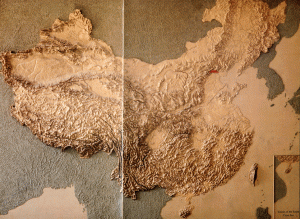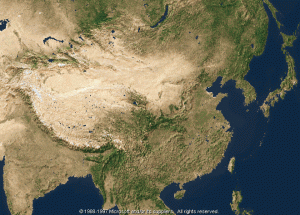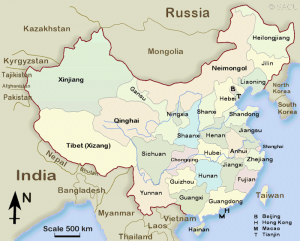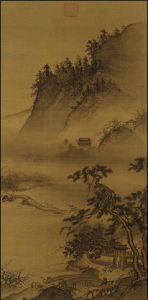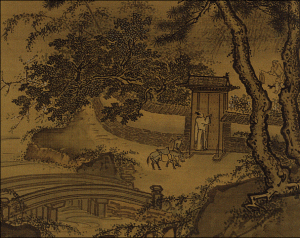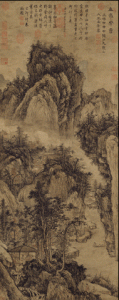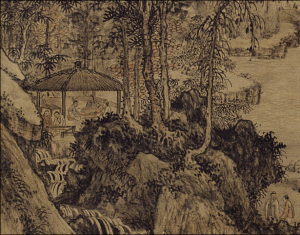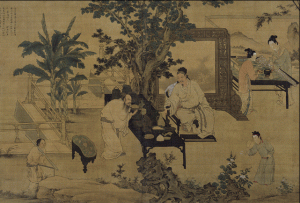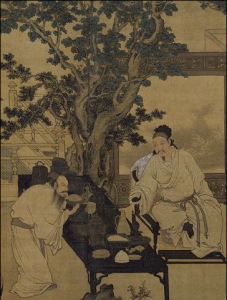The Culture of Commerce
I. Ming Dynasty at a Glance
- “Guesstimates”—85 millions (1393; official record: 60m) … 155m (1500) … 231m (1600) … 268m (1650)
- Organization—provinces (13+2), prefectures (159) … subprefectures (234) … counties (1171)
- Villages—”village compact” … li jia 里甲 system
II. Commercialization and Urbanization
- Expansion of trade—domestic . . . regional specialization . . . merchant networks
- Expansion of trade—maritime . . . South China Sea (1997 discovery; 4,565 blue-and-white porcelain pieces) . . . Manila (1571; ~10,000 Chinese people [1588] . . . ~30,000 [1603]) . . . silk (raw and textiles) . . . cotton textiles . . . pottery . . . porcelain (e.g., 20,000 pieces in 2 galleons in 1573)
- Urban culture—vernacular literature … Tang Xianzu 湯顯祖 (1550–1616) … Peony Pavilion … Feng Menglong 馮夢龍 (1574–1646) … “The Four Masterworks” (The Water Margin … Romance of the Three Kingdoms … Journey to the West … Plum in the Golden Vase)
III. Literati Life
- Civil service examinations—”Four Books” … Eight-legged essay (1487) … provincial quota … sheng yuan 生員 (government students; 100,000 in the 16th century) … ju ren 舉人 (provincial degree) … jin shi 進士 (highest degree; 2,000–4,000 at any given time; 1 out of 10,000 adult males)
- Symbiotic relationship between wealth and status—e.g. in one county in the lower Yangzi region, 19 of the 85 jin shi degrees came from 3 family lines.
- A matter of taste—antiques … gardens … amateur ideals
Intellectual Reorientation
I. Zhu Xi’s Orthodoxy
- li 理 (principle; pattern) and qi 氣 (energy; “psycho-physical stuff”)
- “Investigation of things” (ge wu 格物)
- “Four Books“—Analects 論語, Mencius 孟子, Doctrine of the Mean 中庸, Great Learning 大學
II. Wang Yangming 王陽明 (1472–1529)—scholar …philosopher… official …military general
- Background—Zhejiang … jin shi (1499) … political exile (1507–10) … suppression of rebellions (1516, 1519, 1527-28) … Confucian Temple (1584)
- Innate knowing (liang zhi 良知)
- Unity of thoughts and actions
III. Wang’s Followers
- Wang Ji 王畿 (1498-1583)—”I saw the streets were filled with sage humans.”
- Wang Gen 王艮 (1483–1540)—public lectures
- Li Zhi 李贄 (1527–1602)
Discussion
- What struck you as particularly interesting or surprising about the ledgers of merit and demerit?
- We have so far not focused much attention on Buddhist or Daoist teachings. But as far as you can make out, what could such ledgers tell us about the influence of Confucian, Buddhist, and Daoist teachings on Ming society?
- More generally, how do such ledgers reflect the broader changes in sixteenth- and seventeenth-century China?
Maps
Ming China
Physical Map
Source: National Museum of Chinese History, ed., A Journey into China's Antiquity, vol. 1 (Beijing: Morning Glory Publishers, 1997), pp. 8–9.
Physical Map by Satellite
Administrative Map
Source: SACU


